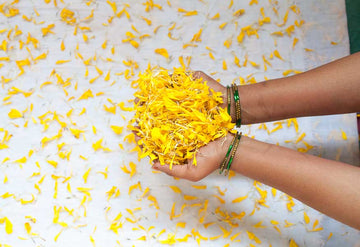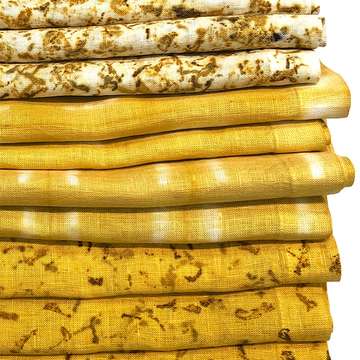Itajime Shibori
Itajime shibori is traditional shaped resist dyeing technique. Historically, the cloth is sandwiched between two pieces of wood, which are cut into a simple shape such as a square and held in place with string. The wood resists the dye to reveal the shape on the finished cloth. Over time, the technique has been modernized to use shapes cut from plexiglass shapes as the resist, with metal clamps to hold it together. We have also experimented with using a series of simple binder clips to create resist designs.



